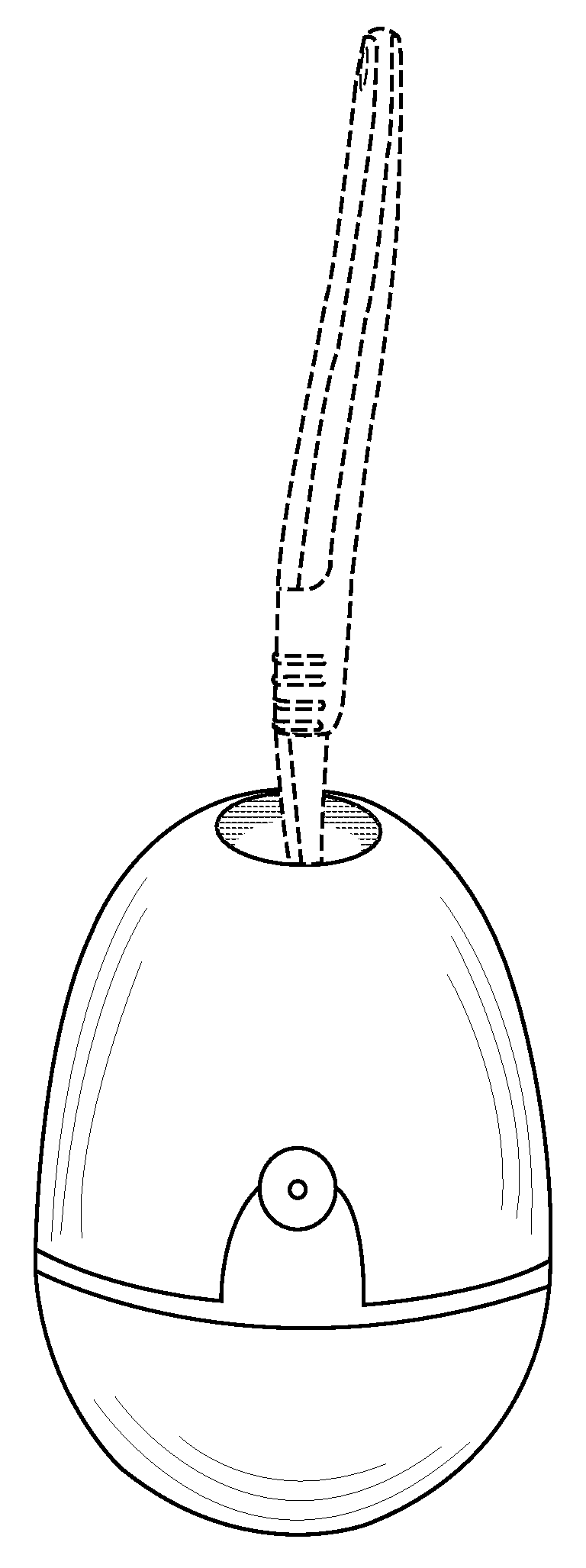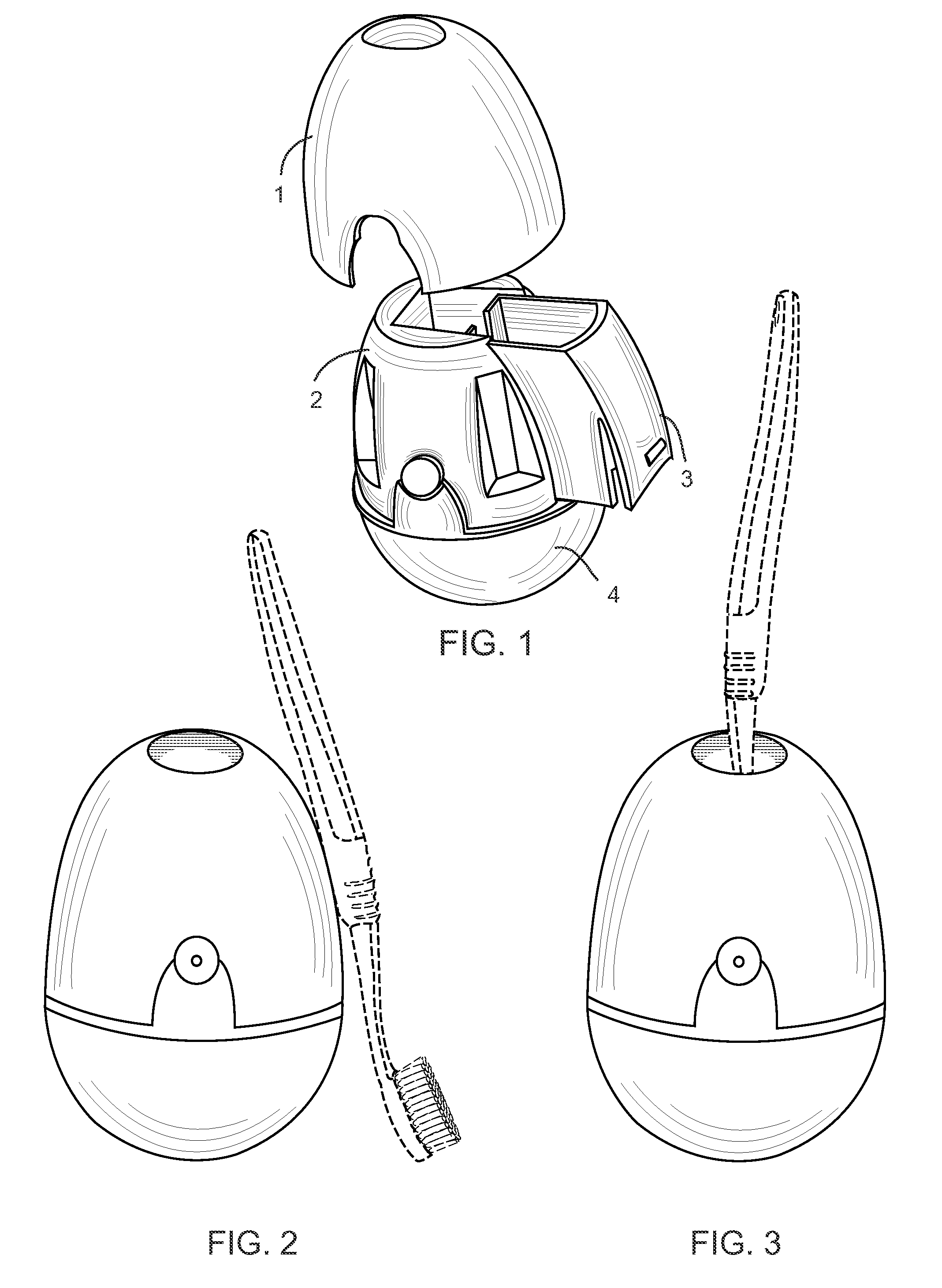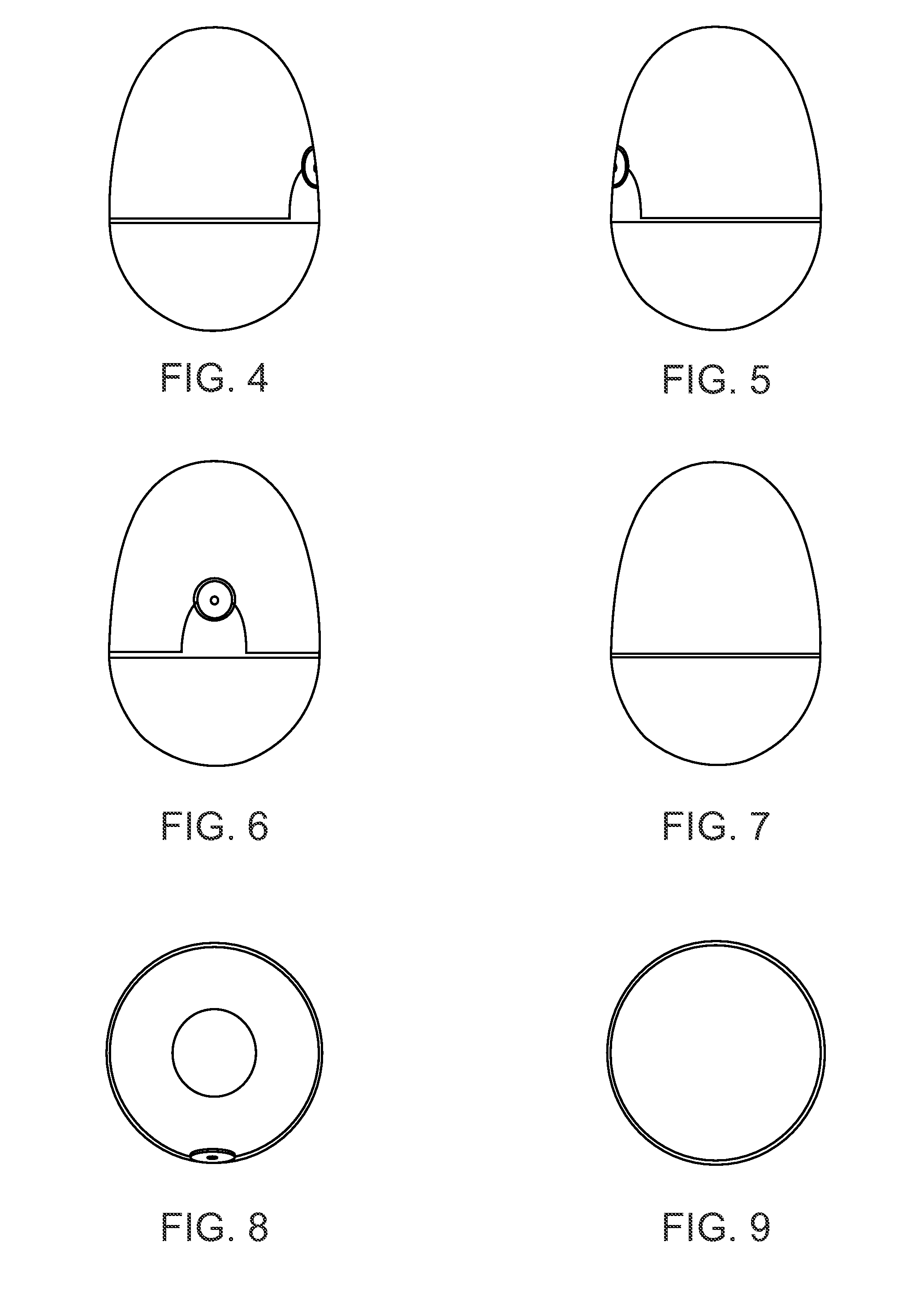Rocking toothbrush sanitizer
a toothbrush and toothbrush sanitizer technology, applied in the direction of instruments, containers, material analysis using wave/particle radiation, etc., can solve the problems of reducing the effectiveness of the apparatus, reducing the safety of users, and preventing eye exposure to uncoated mercury vapor bulbs. , to achieve the effect of preventing tipping and occupying a minimal amount of spa
- Summary
- Abstract
- Description
- Claims
- Application Information
AI Technical Summary
Benefits of technology
Problems solved by technology
Method used
Image
Examples
Embodiment Construction
[0045]FIG. 1 is an exploded perspective view of the apparatus of the preferred embodiment of the present invention. FIG. 10 is a cross-sectional view of the ROCKING TOOTHBRUSH SANITIZER of the present invention. FIG. 11 is a detailed exploded view of the ROCKING TOOTHBRUSH SANITIZER of the present invention. Referring to FIGS. 1, 10, and 11, the apparatus of the present invention is provided with one or more apertures in top cover 1 for inserting a toothbrush as illustrated in FIG. 3. In the preferred embodiment, one aperture is used in cap 1, although other numbers of apertures may be used within the spirit or scope of the present invention.
[0046]A toothbrush or the like may be inserted, bristles downward, into the apertures as illustrated in FIG. 3. In the example illustrated in FIG. 3, a toothbrush is illustrated inserted into the aperture. The toothbrush may comprise any of the type of traditional toothbrushes commercially sold. The apparatus of the present invention may be suit...
PUM
| Property | Measurement | Unit |
|---|---|---|
| wavelength range | aaaaa | aaaaa |
| wavelength range | aaaaa | aaaaa |
| wavelength range | aaaaa | aaaaa |
Abstract
Description
Claims
Application Information
 Login to View More
Login to View More - R&D
- Intellectual Property
- Life Sciences
- Materials
- Tech Scout
- Unparalleled Data Quality
- Higher Quality Content
- 60% Fewer Hallucinations
Browse by: Latest US Patents, China's latest patents, Technical Efficacy Thesaurus, Application Domain, Technology Topic, Popular Technical Reports.
© 2025 PatSnap. All rights reserved.Legal|Privacy policy|Modern Slavery Act Transparency Statement|Sitemap|About US| Contact US: help@patsnap.com



